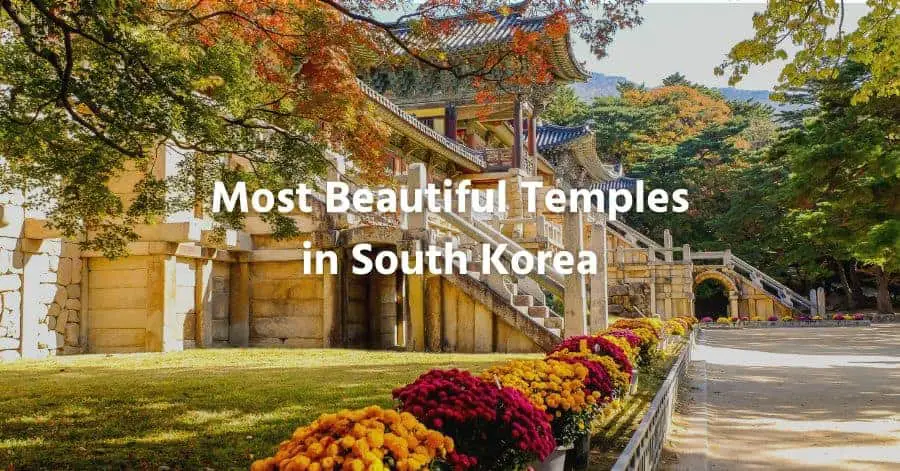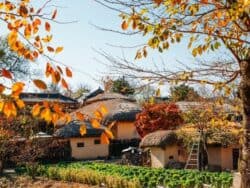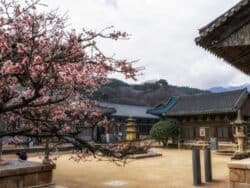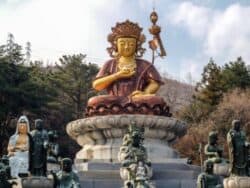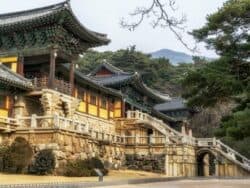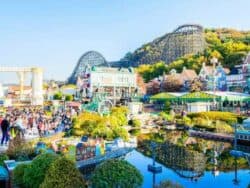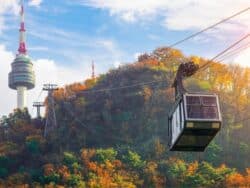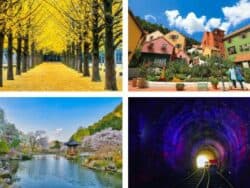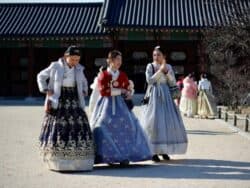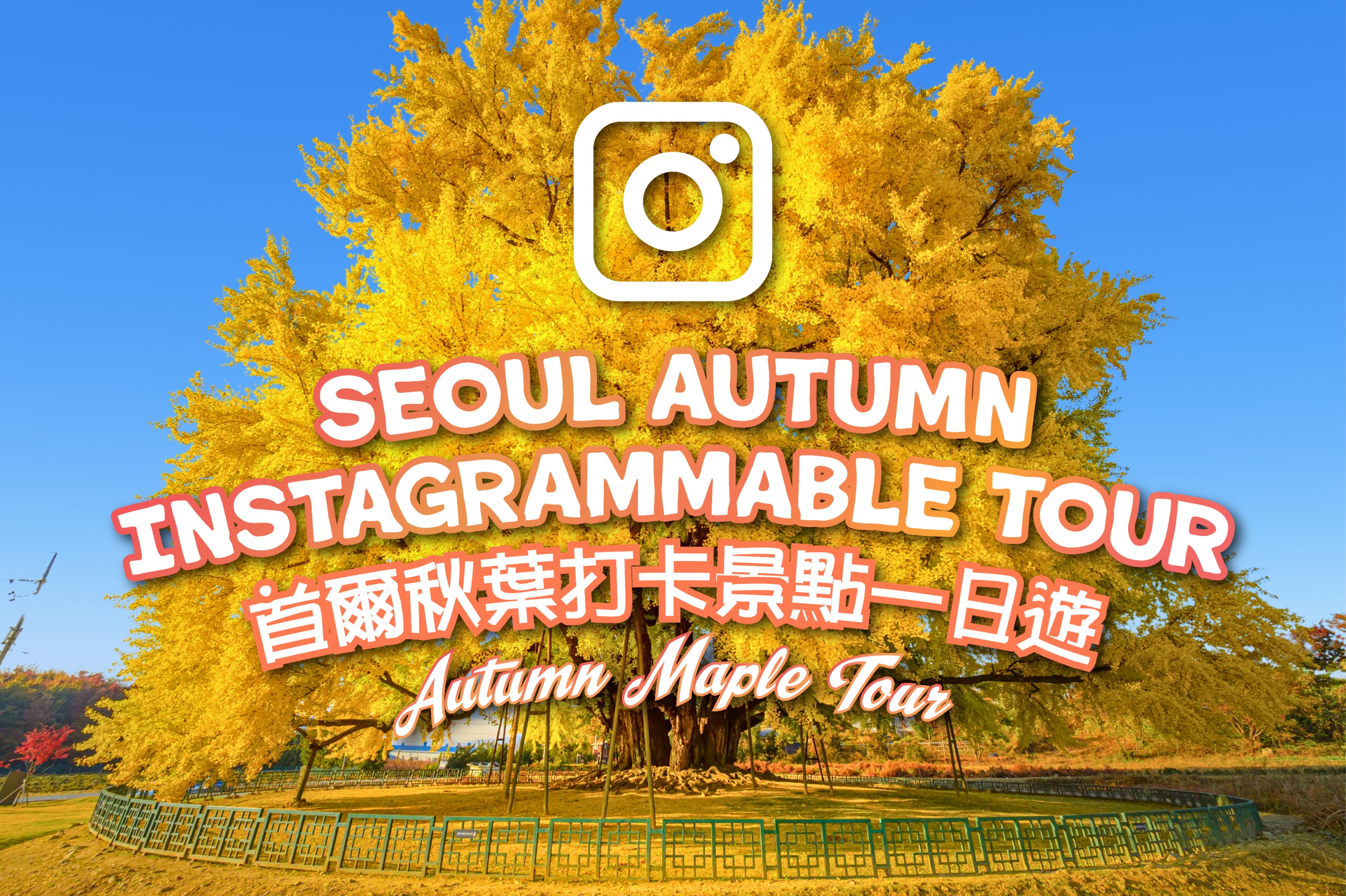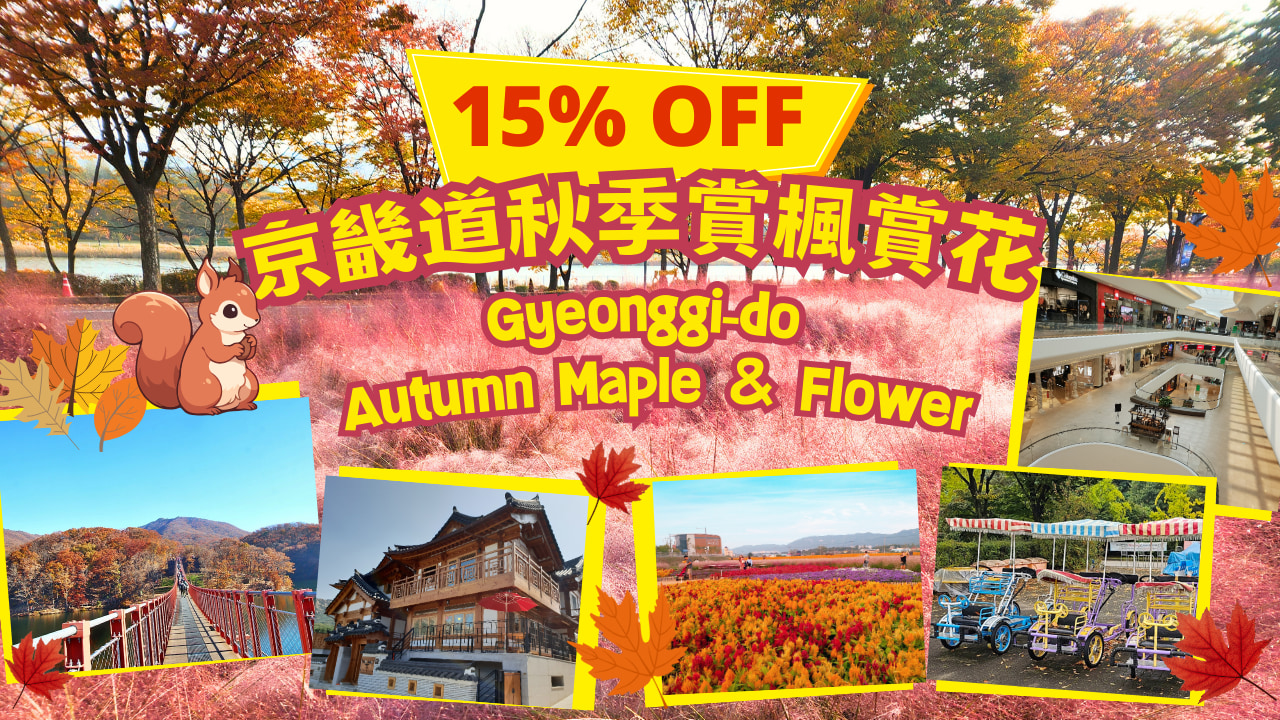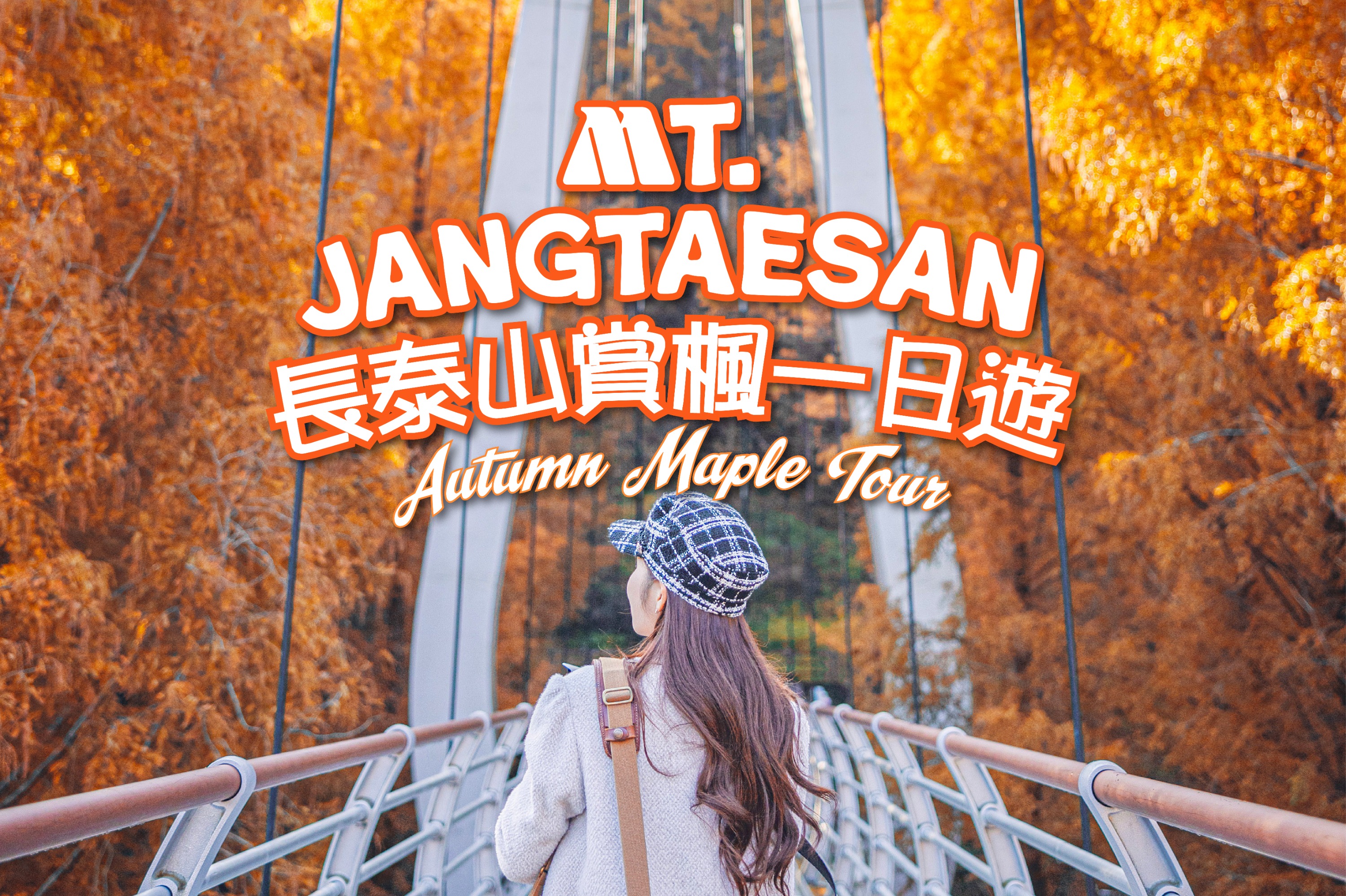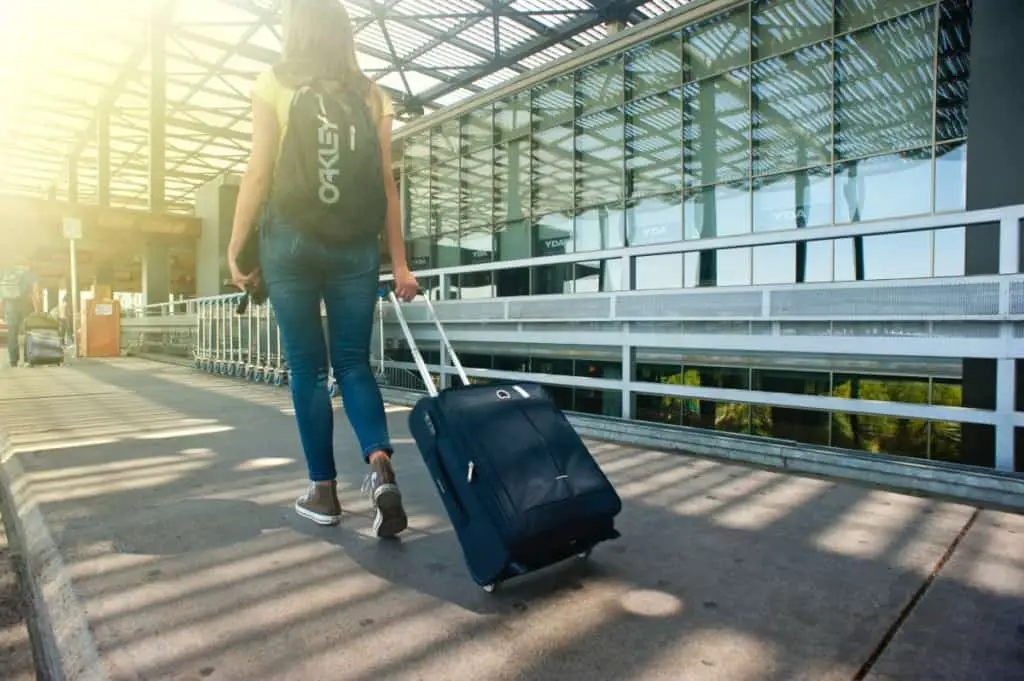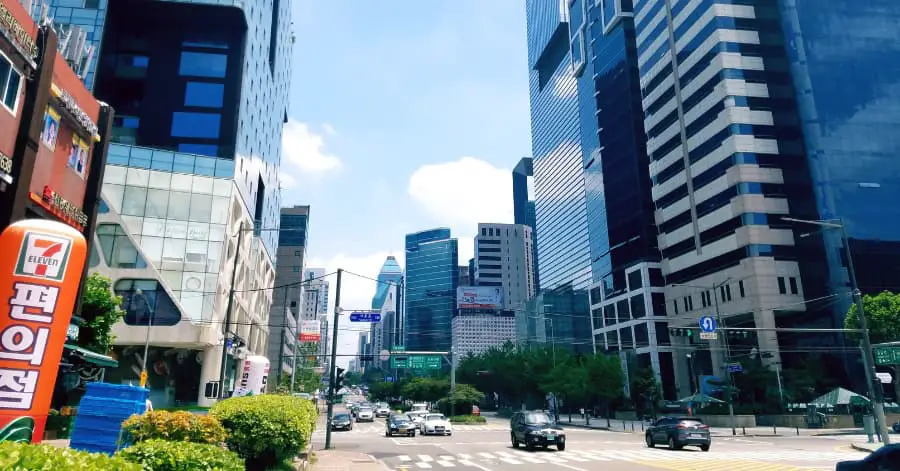South Korea is an absolute dream for lovers of history, culture, and religion. Countless temples are throughout the country, each with unique architecture and cultural significance. For those interested in exploring the country’s religious heritage, visiting the many temples in South Korea is a must. Visiting the many temples in South Korea can be a transformative experience. They offer visitors a unique insight into the country’s rich culture and history, stunning architecture and natural beauty, an opportunity to experience traditional Korean religion, and a place to find inner peace and tranquility. Whether you are a history buff, a religious enthusiast, or simply seeking a peaceful escape, visiting one of the many temples in South Korea is a must.
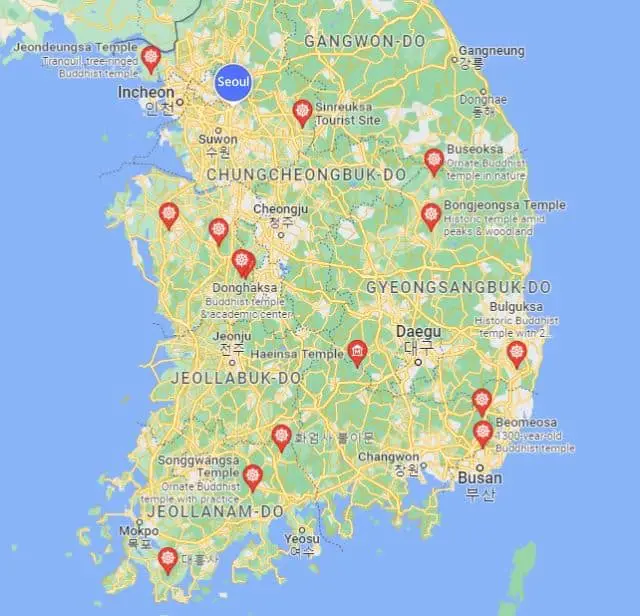
(Click to see it on you Google Maps | Naver Map)
Read also:
- 15 UNESCO World Heritage Sites in South Korea
- Temple Stay in Korea
- Korea Cherry Blossom Festivals 2023
- Ultimate Korea Travel Guide!
- Best 15 Tour Booking Websites in South Korea
- Bulguksa Temple, Gyeongju
- Tongdosa Temple, Yangsan
- Beomeosa Temple, Busan
- Buseoksa Temple, Yeongju
- Magoksa Temple, Gongju
- Haeinsa Temple, Hapcheon
- Songgwangsa Temple, Suncheon
- Daeheungsa Temple, Haenam
- Hwaeomsa Temple, Gurye
- Gapsa Temple, Chungcheongnam-do
- Sudeoksa Temple, Chungcheongnam-do
- Bongjeongsa Temple, Andong
- Jeondeungsa Temple, Ganghwa
- Donghaksa Temple, Gongju
- Silleuksa Temple, Yeoju
- Why visit the many temples of South Korea?
Bulguksa Temple, Gyeongju
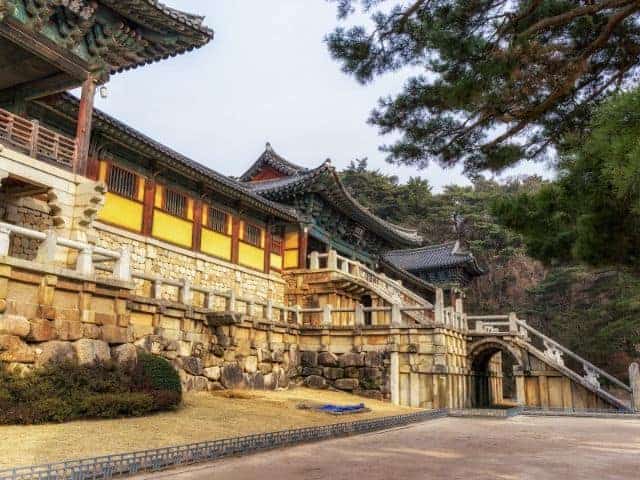
Bulguksa Temple is a UNESCO World Heritage Site located in the city of Gyeongju, South Korea. It is one of the country’s most famous and significant Buddhist temples and is popular for its stunning architecture, historic artifacts, and beautiful natural surroundings. The temple has multiple buildings and structures, each with its own unique design and purpose. The main hall, Daeungjeon, is a two-story structure that houses a large statue of Buddha. The hall has intricate carvings and paintings that depict Buddhist teachings and stories. Another notable artifact is the Seokgatap, a stone pagoda that stands 10 meters tall.
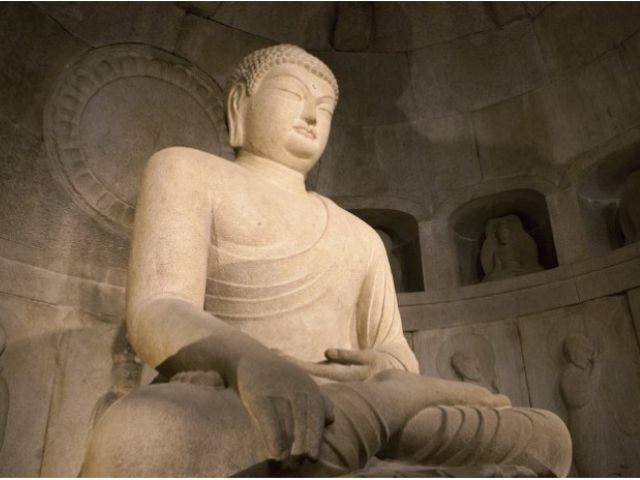
Overall, the temple’s stunning architecture, artwork, and natural surroundings make it a must-see destination for anyone interested in Korean culture and history.
- Address: 385 Bulguk-ro, Gyeongju-si, Gyeongsangbuk-do
- Homepage and Temple Stay
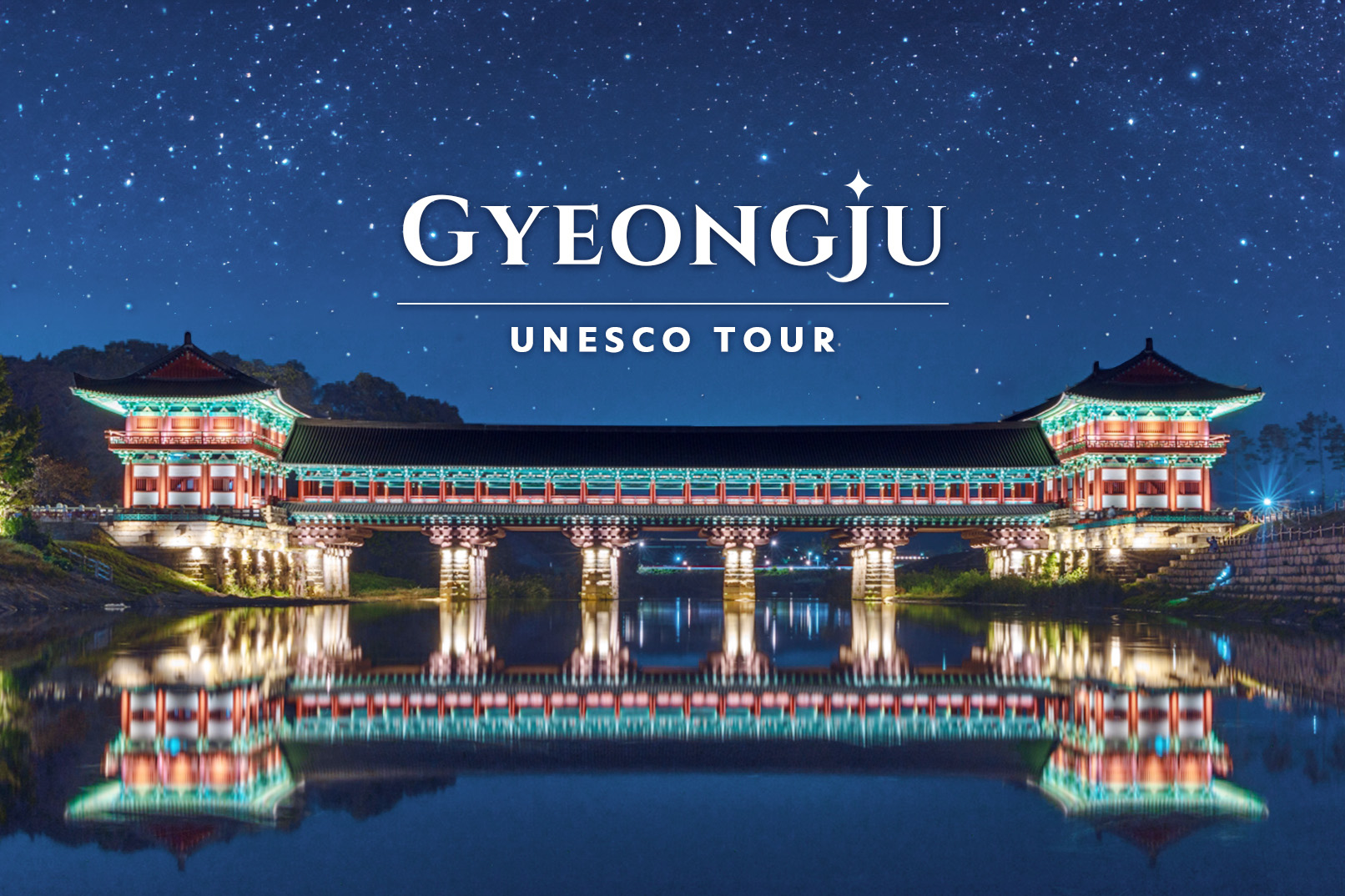
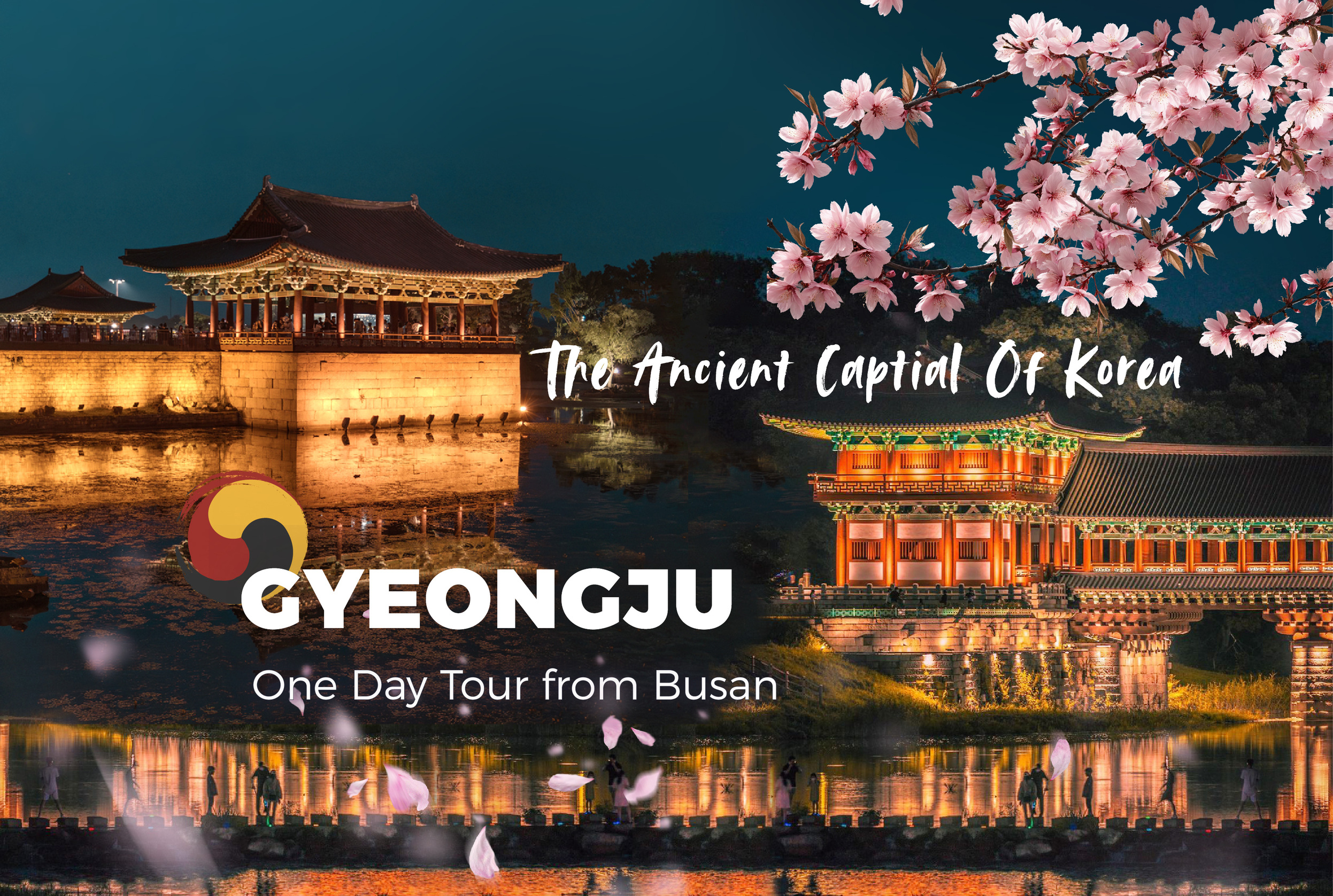
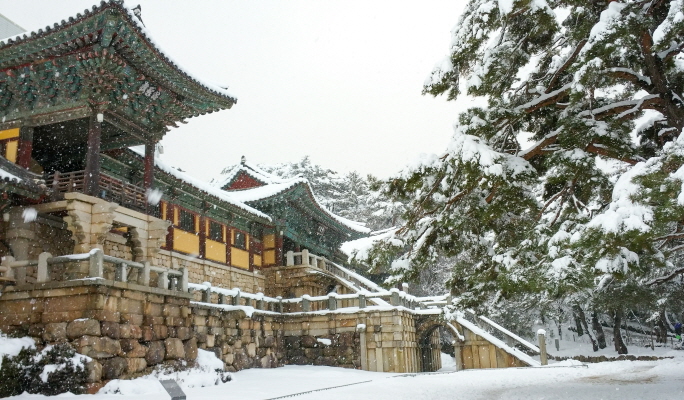
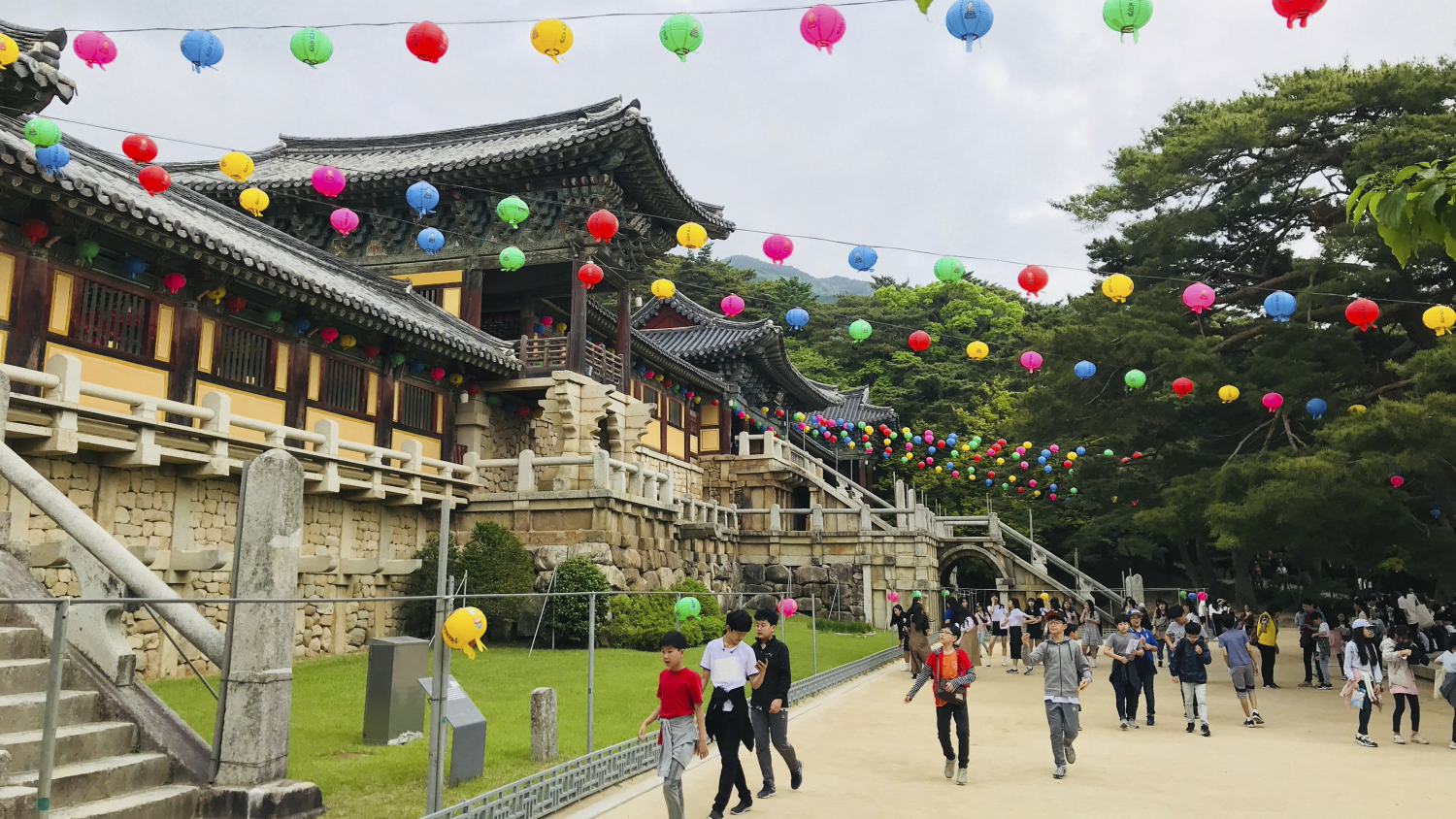
Tongdosa Temple, Yangsan
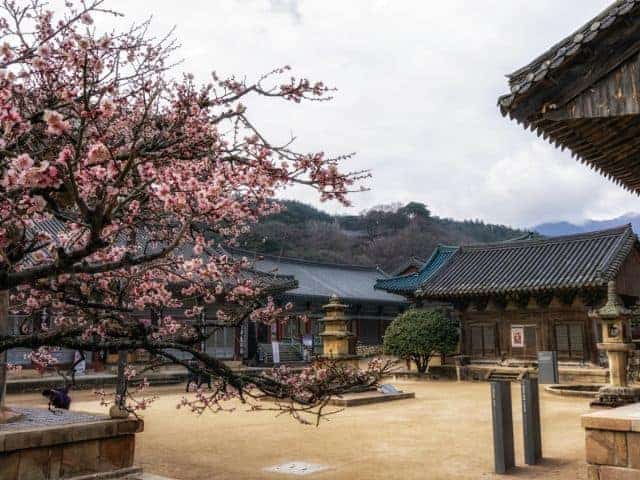
Tongdosa Temple is a Buddhist temple in Yangsan and the largest of its kind in the country. Another stunning temple that you can’t miss if you visit South Korea! Tongdosa was founded in 646 AD during the Silla Dynasty. The temple has housing for the Tripitaka Koreana, a collection of Buddhist scriptures that were carved onto wooden blocks during the Goryeo Dynasty. These scriptures are considered a national treasure of Korea and are recognized as a UNESCO World Heritage Site. The temple also features a beautiful garden area known as Yeongsanjae, where visitors can take a leisurely stroll and enjoy the serene atmosphere. The garden is home to several important religious artifacts and statues, as well as a pond filled with lotus flowers.
The temple complex is massive and visitors can spend an entire day observing its unique beauty and ambiance. Tongdongsa is also known as the ‘temple without a Buddha,’ due to its lack of statues in its outdoor areas. Visitors can take a scenic hike up the mountain and enjoy breathtaking views of the surrounding landscape.
- Address: 108 Tongdosa-ro Habuk-myeon Yangsan-si, Gyeongsangnam-do
- Homepage and Temple Stay

Beomeosa Temple, Busan
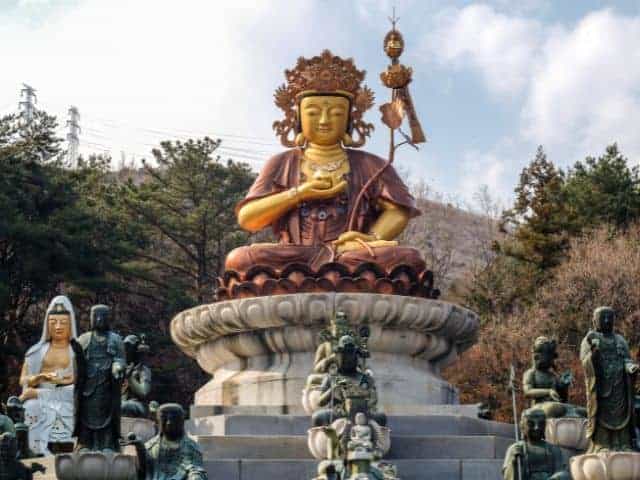
Beomeosa Temple is a beautiful temple located in the mountains of Busan, serving as one of the head temples of the Jogye Order of Korean Buddhism. Founded in 678 AD by the monk Uisang, the temple is a treasured cultural site in the region. Visitors can explore the temple complex and admire the colorful buildings and intricate architecture. The main hall, Daeungjeon, houses the temple’s most sacred relic, a statue of Seokgamoni Buddha. The statue is surrounded by smaller statues of bodhisattvas and disciples, creating a serene and peaceful atmosphere.
The temple is also home to many cultural artifacts, including Buddhist paintings and statues. One of the most famous attractions at Beomeosa Temple is the Three-Story Stone Pagoda, which dates back to the 9th century. Throughout the year, Beomeosa Temple hosts a number of festivals and events, including lantern festivals, lotus festivals, and meditation retreats. These events offer visitors a unique opportunity to experience Korean Buddhist culture and traditions firsthand.
- Address:250 Beomseosa-ro Geumjeong-gu, Busan
- Homepage and Temple Stay

Buseoksa Temple, Yeongju
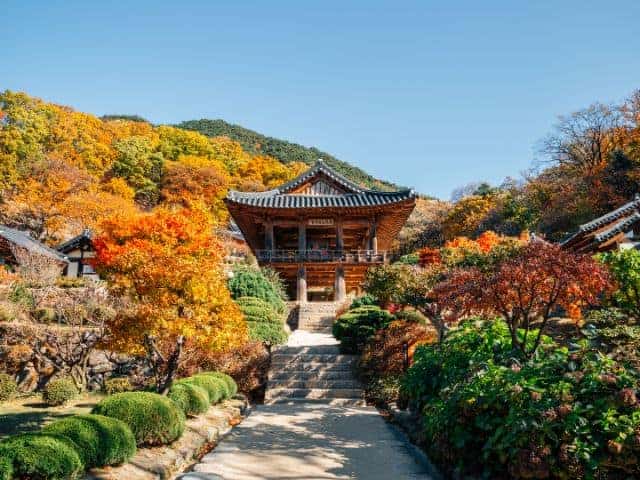
Buseoksa Temple is a historic Buddhist temple located in Yeongju, South Korea. The temple was first built in the late 7th century during the Silla dynasty. The temple complex is home to many buildings, including the main worship hall, a pagoda, and a bell tower. Visitors can also see the temple’s treasures, which include ancient texts and artwork. Visitors to the temple are greeted by a grand entrance gate called Iljumun, which leads to a beautiful courtyard filled with statues and pagodas. One of the most notable attractions is the Stone Seated Buddha, a national treasure and a symbol of Korean Buddhism. Buseoksa Temple is surrounded by beautiful natural scenery, making it a popular destination for both tourists and locals. The temple’s serene atmosphere and cultural significance make it an important site for Buddhist practice and study in South Korea.
Aside from its architectural beauty, Buseoksa Temple is also a place for meditation and spiritual practice. Visitors can participate in various programs, such as meditation sessions and Buddhist ceremonies, to gain a deeper understanding of Buddhism and find inner peace.
- Address: 345 Buseoksa-ro Buseok-myeon Yeongju-si, Gyeongsangbuk-do
- Homepage
See Temple Tours in South Korea
Magoksa Temple, Gongju
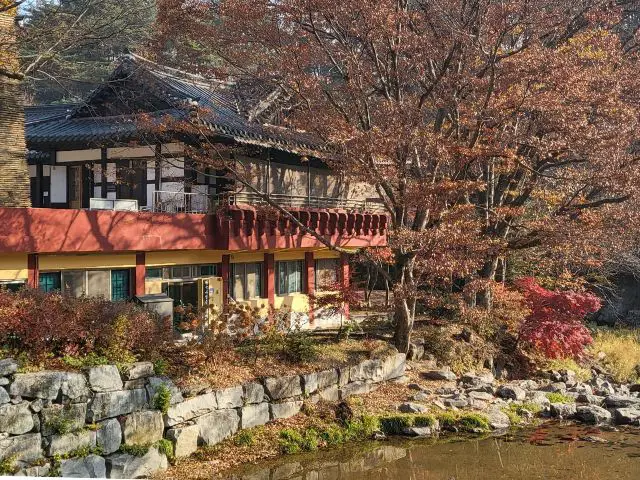
It is a historic and culturally significant Korean Buddhist temple located in the Gongju region. The temple was founded in the year 640 by the monk Jajang, who later became one of the most important figures in Korean Buddhism. Visitors to Magoksa Temple can see a number of important buildings and artifacts, including the main prayer hall, the Daeungjeon, which houses a large statue of Buddha, as well as the Cheonwang Moon Gate, which is decorated with colorful paintings of the Four Heavenly Kings. One of the most striking features of the temple is its natural setting, with lush forests and rolling hills surrounding the buildings. Many visitors come to experience the temple’s serenity and spiritual energy. Magoksa Temple is a cultural and historical landmark of South Korea.
- Address: 966 Magoksa-ro Sagok-myeon Gongju-si, Chungcheongnam-do
- Homepage with Temple Stay
Haeinsa Temple, Hapcheon
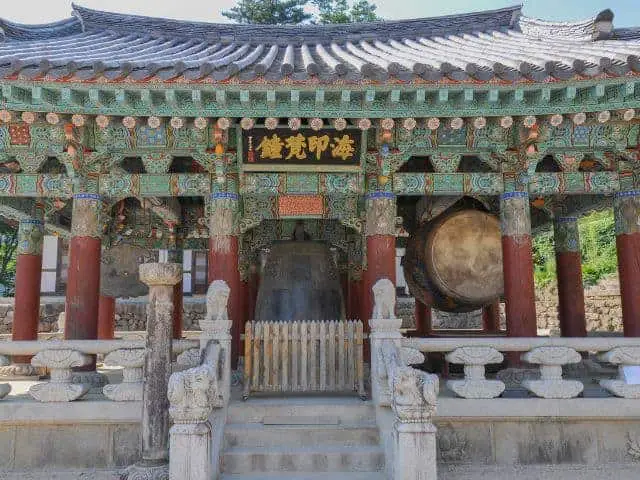
Haeinsa Temple, located in Hapcheon, South Korea, is a significant cultural and religious site. Visitors to Haeinsa Temple can explore the various halls and buildings, including the Daejeon Kwang Jeon Hall, which houses a statue of Buddha, and the Janggyeong Panjeon, where the Tripitaka Koreana is kept. The temple also offers programs for visitors to experience temple life, such as meditation and temple stay programs.
The monks of Haeinsa Temple are known for their dedication to preserving and sharing the teachings of Buddhism. They have also played a significant role in promoting Korean culture and spirituality. The temple attracts thousands of visitors every year, both from within South Korea and around the world, who come to learn about Buddhism, Korean history, and traditional culture.
Surrounding the main temple complex are several smaller halls and buildings. The Gugwangru Pavilion, located on a nearby hill, offers a stunning panoramic view of the temple and the surrounding countryside. Overall, Haeinsa Temple is a remarkable site that offers visitors a unique glimpse into Korean history, culture, and religion.
Address: 473, Haeinsa-ro, Gaya-myeon Hapcheon-gun, Gyeongsangnam-do, South Korea, 50263.
Songgwangsa Temple, Suncheon
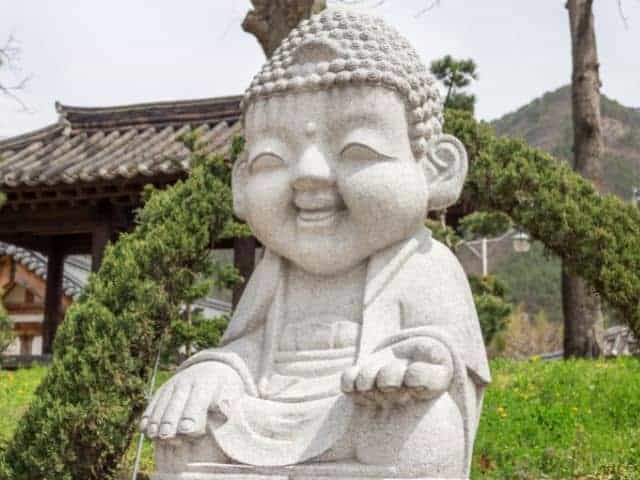
Songgwangsa Temple is a gorgeous temple, considered one of the three jewels of Korean Buddhism, along with Haeinsa Temple and Tongdosa Temple. It houses many cultural treasures, including a three-story pagoda. The famous Eungjinjeon hall is where the temple’s treasured texts and Buddhist relics are kept. Additionally, the Geukrakjeon hall is where the temple’s monks practice their daily meditation and hold religious ceremonies.
Visitors can enjoy hiking, meditation, and temple stay programs. The temple is a popular destination for those seeking spiritual enlightenment. The surrounding natural beauty adds to the peaceful atmosphere. The temple also hosts an annual lantern festival in honor of Buddha’s birthday.
- Address: 100 Songgwangsaan-gil Songgwang-myeon Suncheon-si, Jeollanam-do
- Homepage with Temple Stay
Daeheungsa Temple, Haenam
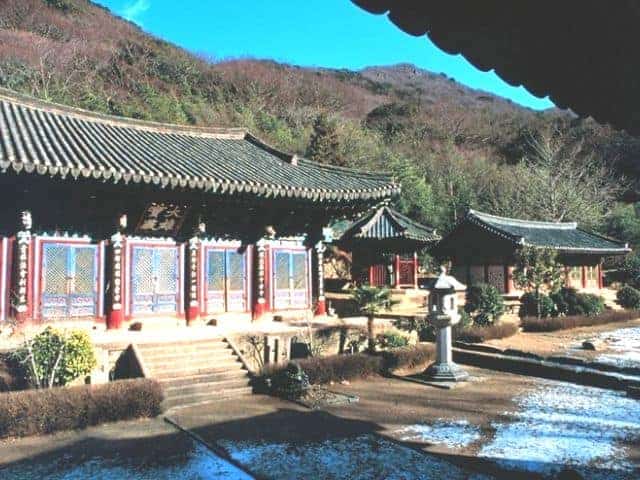
Daeheungsa Temple is a famous Buddhist temple located in Haenam, South Korea. The temple was established in 503 AD. The temple is known for its stunning architecture and historical significance. Visitors can explore the temple complex, which includes several buildings and halls. The main hall of the temple is the Daeungjeon Hall, which houses a large Buddha statue. The temple also features a bell tower and a museum. The museum displays various artifacts and cultural relics. Visitors can participate in temple stays and meditation programs. The temple offers a peaceful and serene atmosphere for those seeking spiritual enlightenment.
- Address: 400 Daeheungsa-gil Haenam-gun, Jeollanam-do
- Homepage with Temple Stay
Hwaeomsa Temple, Gurye
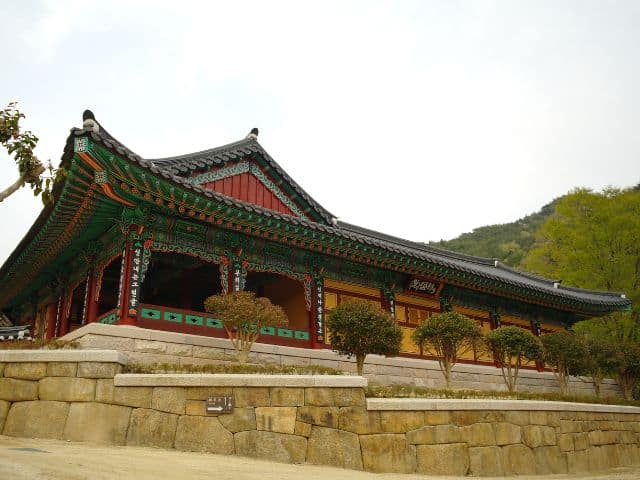
Hwaeomsa Temple is a historic Buddhist temple in Gurye, dating back to the 2nd century. The temple is known for its beautiful architecture and tranquil surroundings. The temple has several stunning prayer halls and majestic pagodas. The main prayer hall houses a large Buddha statue, and the temple also features a bell pavilion and a drum pavilion. It is an important cultural and religiously significant temple in the Gurye region of the country and is recommended for all lovers of history and Buddhist pilgrims.
- Address: 539 Hwaeomsa-ro Gurye-gun, Jeollanam-do
- Homepage with Temple Stay
Gapsa Temple, Chungcheongnam-do
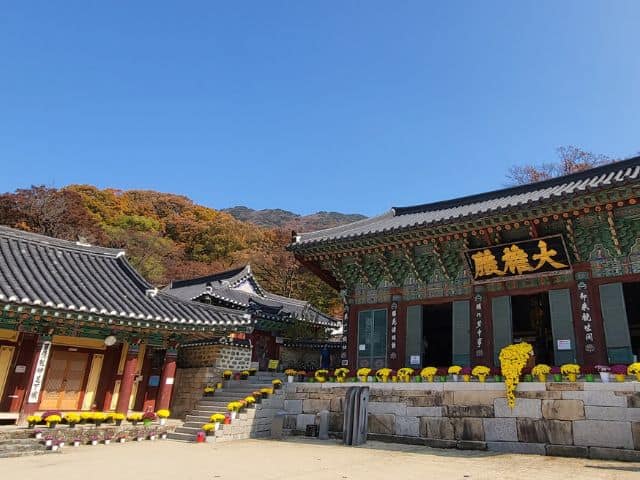
Gapsa Temple is another magnificent Korean Buddhist temple located in Chungcheongnam-do, South Korea. The temple’s history dates back over 1,300 years. Gapsa Temple features a nine-story pagoda and beautiful gardens. The temple also offers various cultural programs and experiences. The temple’s main hall houses a statue of Seokgamoni-bul, the historical Buddha. The temple is situated in a serene and peaceful setting, surrounded by mountains and forests. In addition to its stunning architecture and artwork, Gapsa Temple is also known for its beautiful natural surroundings. The temple is situated at the foot of Mount Gyeryong, which is known for its picturesque scenery and hiking trails.
Visitors to Gapsa Temple can participate in a variety of activities, including temple stays, meditation retreats, and cultural programs. Gapsa Temple is considered one of Korea’s most beautiful and sacred temples. Visitors can enjoy a spiritual and cultural experience at the temple.
- Address: 567-3 Gapsa-ro Gyeryong-myeon Gongju-si, Chungcheongnam-do
- Homepage with Temple Stay
Sudeoksa Temple, Chungcheongnam-do
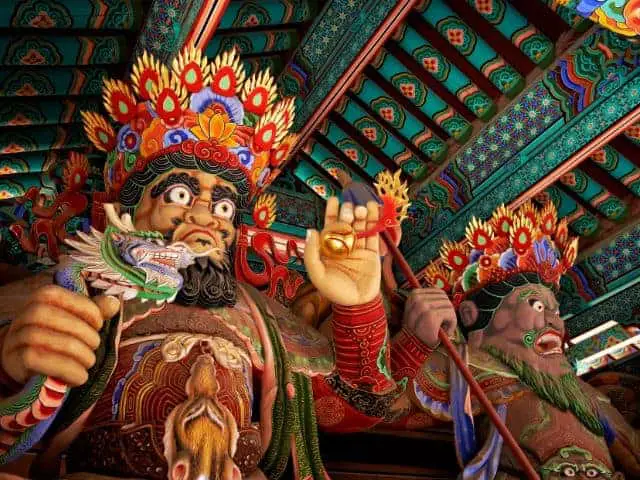
Sudeoksa Temple, located in Chungcheongnam-do, South Korea, was founded in 1308 during the Three Kingdoms period. It features numerous historical buildings, including a stone pagoda and a main hall. The pagoda is seven stories tall and stands in the middle of the temple complex. You can climb the stairs to the top of the pagoda for a panoramic view of the surrounding area.
Visitors can participate in various cultural activities, such as meditation and tea ceremonies. The temple is also known for its beautiful scenery, with nearby mountains and streams. Sudeoksa Temple hosts several festivals throughout the year, including a lantern festival and a lotus lantern festival. The temple is also home to 15 items of designated cultural heritage, making it a dream destination for lovers of Korean art, history, and Buddhism. The impressive buildings, intricate artwork, and stunning natural surroundings make it a truly unique and memorable experience.
- Address: 79 Sudeoksaan-gil Deoksan-myeon Yesan-gun, Chungcheongnam-do
- Homepage with Temple Stay
Bongjeongsa Temple, Andong
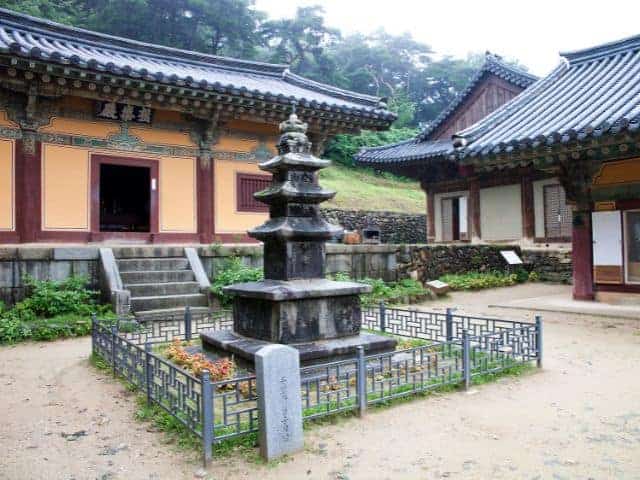
Bongjeongsa is a historic temple located in Andong and the largest in the region. The temple is on the slopes of Mount Cheondung and overlooks the picturesque Hahoe Village. Visitors can enter the temple through the Iljumun Gate, which marks the entrance to the temple grounds. From there, they can follow the path that leads to the main hall of the temple, the Daeungjeon Hall. The Daeungjeon Hall is a magnificent structure that houses a large statue of Buddha.
The temple’s surroundings are just as impressive as the temple itself. The mountainous landscape, combined with the tranquil atmosphere of the temple, creates a serene and peaceful environment. Bongjeongsa is a place where visitors can experience the rich culture and history of Korea. It is also a place where people can come to reflect and find inner peace.
- Address: 222 Bongjeongsa-gil Seohu-myeon Andong-si, Gyeongsangbuk-do
- Homepage with Temple Stay
Jeondeungsa Temple, Ganghwa
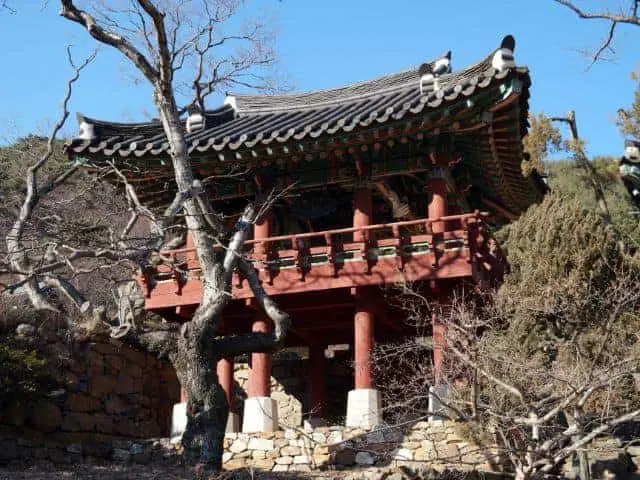
Located in the Samnang Seong Fortress complex, Jeondeungsa is a stunning Korean Buddhist temple constructed during the Goryeo Dynasty. The temple is surrounded by mountains and a river, making it a peaceful and serene location. Visitors can participate in temple stay programs to experience Buddhist culture firsthand. The temple is also famous for the annual “Jeondeungsa Yeon Deung Nori” festival, which features traditional performances and ceremonies. This gorgeous temple is also home to several architectural masterpieces like the Daeungjeon Hall, Taksajeon Hall, Beomjong Bell, and the Yangheonsu Monument.
- Address: 37-41 Jeondeungsa-ro Gilsang-myeon Ganghwa-gun, Incheon
- Homepage with Temple Stay
Donghaksa Temple, Gongju
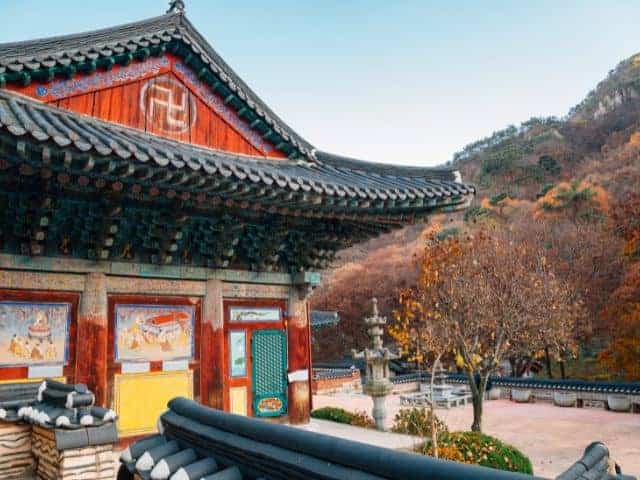
Donghaksa temple, located in Gongju, South Korea, features a seven-story stone pagoda. Visitors can explore the main hall, housing a statue of Buddha, and the pagoda, which offers sweeping views of the surrounding area. The temple also includes a bell tower and several smaller buildings, which visitors can explore. Daeungjeon is decorated with elaborate paintings and carvings, which depict scenes from Buddhist mythology and history. Visitors can also see intricate woodwork and stonework throughout the temple, showcasing the skilled craftsmanship of the artisans who built and maintained the temple over the centuries. One of the most striking features of Donghaksa is the large bell tower, which sits at the highest point of the temple complex. Donghaksa is a popular destination for tourists and locals alike, offering a glimpse into the rich cultural heritage of Korea.
- Address: 462 Donghaksa1-ro Banpo-myeon Gongju-si, Chungcheongnam-do
Silleuksa Temple, Yeoju
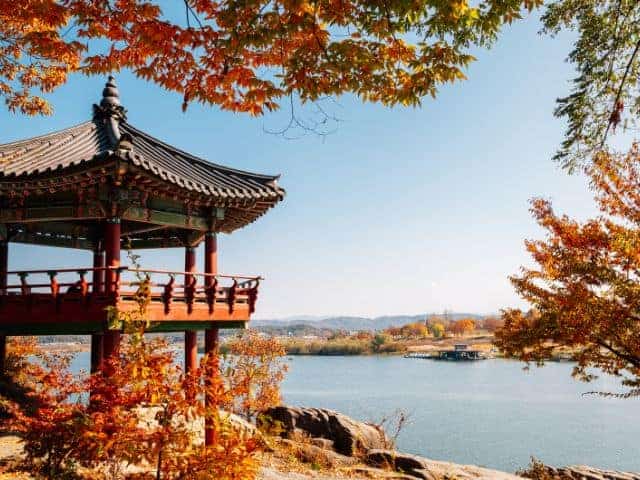
Silleuksa Temple is a historic and picturesque Buddhist temple located in the city of Yeoju, South Korea. The temple, which dates back to the year 580, has stunning natural surroundings and a unique architectural design. As visitors approach Silleuksa Temple, they are immediately struck by the beauty of the landscape that surrounds it. The temple is situated on a small hill, surrounded by dense forests and gently flowing streams. The main hall of the temple represents a stunning example of traditional Korean temple architecture. The hall features intricate carvings and decorative elements and is home to a number of important Buddhist artifacts and relics.
Overall, Silleuksa Temple is a truly unique and remarkable destination for anyone interested in history, culture, or natural beauty. With its stunning surroundings, impressive architecture, and rich cultural heritage, it is no wonder that it is one of the most important and beloved temples in all of South Korea.
- Address: 73 Silleuksa-gil Yeoju-si, Gyeonggi-do
- Homepage with Temple Stay
Why visit the many temples of South Korea?
Visiting Buddhist temples in South Korea is a must-do activity for anyone interested in exploring the country’s rich culture and spirituality. These temples offer a unique glimpse into the ancient traditions and teachings of Buddhism, as well as the opportunity to immerse oneself in a peaceful and meditative atmosphere. Exploring the Buddhist temples in South Korea can be a transformative and enlightening experience for individuals of all backgrounds and beliefs. Everyone who loves history and culture must visit Buddhist temples in South Korea. This is a highly recommended activity that offers a range of benefits, from cultural and spiritual enrichment to outdoor adventure and personal growth. So, why not plan a visit to a temple today and see for yourself all that they have to offer?
IVK’s Top Picks – Day Tours, Tickets, and Travel Activities
Seasonal Picks!😍


